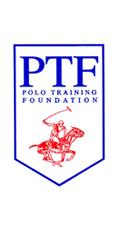Cambiaso Continues to Dominate Polo
|
|
At 32 years old, Adolfo Cambiaso is at the top of the polo world. Opponents fear him, women swoon over him, and fans adore him. For the past 15 or so years he has been respected and admired as one of the best 10-goal players, but he seems only to improve with age. He has won nearly every tournament he has played in, and for the past year or more he has entirely dominated the sport both here and abroad. Cambiaso grew up in a polo family, but perhaps not like you would imagine. His father didn’t start playing polo until he was 35, and even then it was just for fun. His family started La Martina Polo Ranch, with a polo school. Cambiaso would go to school then come home and play polo basically in his own back yard. Interestingly enough, Cambiaso’s father was a champion surfer. Cambiaso says: “He was a surfer, an American champion for three years on the long boards. [He had] nothing to do with polo.” Still, his father became 4 goals as an amateur and taught his sons to play. Cambiaso learned much from his father and later from his two brothers. [He also has a sister.] Aside from Cambiaso, the highest rating held by a member of his family is 6 goals, earned by his half-brother, Salvador Socas, who was seriously injured in a polo accident in October 2005. He was in a coma for a few months after suffering severe head trauma. Though Socas has since improved, according to Cambiaso he has not completely recovered. In his early years, Cambiaso showed plenty of polo potential. By the time he was 12 years old he was rated 1 goal in Argentina. A year later he was rated 3 goals when he played with his father on the La Martina team, which won the Eduardo Heguy Cup. The following year he was traveling with his father to the United States to play in Santa Rosa, California, and Spokane, Washington. Cambiaso says: “I traveled with my father ... when I was 14 years old and 4 goals. My career started there. ... I worked for two months with [my father] and he paid me with an old bike! But it was fun. He was paying my bills in Argentina anyway, so I didn’t care about money. I was just thinking about playing polo. And that was my thing actually until I was 19 or 20. I was thinking much more about the game than getting paid or not. I just wanted to play.” By the time he was he 15, Cambiaso was playing high-goal polo in the United States with Jack Oxley’s Fort Lauderdale team, which won the 26-goal C.V. Whitney Cup. He also played with Adam Lindemann’s Cellular One team, which won the 26-goal Rolex Gold Cup. His rating in Argentina had climbed to 6 goals, but his American rating lagged behind at 4 goals. The USPA decided to raise him to 6T, and according to the rules then, since it was fewer than 15 days before the start of the Gold Cup, the Cellular One team was allowed to compete as a 28-goal team. After the Gold Cup, he was immediately raised to 7 goals. That summer he went to England, where he won the British Gold Cup with Tramontana and the Warwickshire Cup with Ellerston. He competed the next U.S. season with a 9-goal rating with the Rolex A&K team, winning the World Cup. Later that year, the USPA and the British Polo Association decided he had reached the pinnacle of the sport when they raised him to 10 goals. At 17, he was the youngest player ever to achieve that mark. Cambiaso says the honor was strange to him. “It was strange because I never thought about the handicap. I was 10 goals when I was 16, 17 here in America, but I was so young I never thought about [being] 10- goals. They put me up to 10 goals, and they were wrong at the time. Ten goals to me is not only playing well, you have to have a good organization, horses and other things.” He believes he shouldn’t have gone up to 10 goals until he was about 19. The Argentine Association of Polo also thought so. Even though he played his first Argentine Open that year, scoring a record 16 goals in his first match, he wasn’t raised to 10 in Argentina for another two years after winning the 1994 Argentine Triple Crown. The sport has provided Cambiaso the opportunity to travel all over the world to play. He has won every major tournament in every country, including Argentina, the United States, England, Spain and France. He has won the coveted Argentine Open six times, three times with Ellerstina and three times, including the last two years, with his La Dolfina team. All the tournaments are fun, but Cambiaso enjoys playing with his friends the most. “Sometimes for money, you just try to pick the best team you can and you put aside the friendship. But when I play for myself, I prefer to play with friends.” One of his closest friends, 10-goal Bartolome “Lolo” Castagnola, has won the Argentine Open with him five of six times. “Every year has something. Some you have better celebrations, some less, some you like to win with some players, but all of them [have something, and] I wouldn’t give them away!” Still, Cambiaso admits, the travel and playing too much can get to him. “It’s exciting until one point when you just want to be home. Now I can tell you I am missing home and I’m thinking about cutting some tournaments [and taking some time] to be home because of my family, because of me and because of my head. Playing competitive too much, you get tired. … I know myself. I have to cut [out] some tournaments just to get the motivation back.” To keep the competitive fire burning he likes to pick certain tournaments and focus on just those, like the Argentine Open, the U.S. Open and the Queen’s Cup in England. Relaxation for Cambiaso means going home to his farm in Argentina, working around the horses and spending time with his family. Cambiaso’s family includes wife Maria Vazquez, a model and television personality in Argentina, and their two children, 4-year-old daughter Mia and 18- month-old son Adolfo, “AC.” Though his wife has no interest in horses, [in fact, Cambiaso admits she is scared of them] his kids adore them. “[Mia] was born with it so she is a fanatic about horses. She goes to the farm with me and sees 300 horses. She sits there and doesn’t move. She loves to look at them.” According to Cambiaso she has been on horses since she was born and already rides by herself. Still, though he’d like her to be around horses, he doesn’t see her ever playing polo. His son on the other hand will play, Cambiaso jokes, “or I kill him!” Horses are what attracted Cambiaso to polo in the beginning and it’s what he likes most about the sport today. He says pretty much all of his time and money goes into his breeding operation and his horses. He manages the horses himself. “I know every single one. I study all of them, by name, mother, father, etc. … I like to go to my farm and make horses, make champions.” He has been successful, starting with his first horse. “I bought a horse when I was 11 years old when I was 0 goals, and I played him until I was 19, which is when I arrived to 10 goals. I called him Lobo because he was a lion. He played in the final [in the Argentine Open] at Palermo, two chukkers. That was my first buy, and I can tell you today it was lucky.” Whether by luck or not, he has had some of the best horses ever. Aiken Cura, who died of complications after breaking his leg in the overtime chukker of the Argentine Open final this past year, won the Lady Susan Townley Cup as the best horse in the Argentine Open tournament in 2005 and 2006. And his best mare from his breeding, Dolfina Cuartetera, won 2006 best playing pony of the final of the Argentine Open. He has taken horses from the United States to breed with his stock and is constantly looking for better horses. He likes working with embryos because the donor mares live longer. “They don’t have to carry the baby so I have mares that are 25, 26, 28 years old that still give you babies.” Polo and horses are not Cambiaso’s only interests. He loves sports and most of them he does rather well. Apparently he is really good at golf, tennis, windsurfing, even table tennis! However, he admits he’s not good at soccer. “I love the game, but I am a disaster! Every sport that I play with my hands I am much better at than with my legs.” Another hobby Cambiaso has gotten into is the clothing business. “I like to do new things and different things. La Martina was my mother’s brand and it’s working really well, so I said why not do La Dolfina. It is a real story and it’s mine. It is my name and it is where I grew up. I started La Dolfina [brand clothing] three years ago and it is doing well.” His wife and her brother run the business. Cambiaso helps with some things like choosing the new collections and modeling clothes for ads. They have a store in Argentina and a Web site. Still, polo is his game of choice and arguably there is no one better now or maybe ever. Cambiaso’s performance this past highgoal season in Florida, culminating with a tough U.S. Open victory, had people talking. Most people agree he played two goals better than any other 10-goal player. There was discussion over whether the high handicap should be raised to 12 goals, or if every other 10-goal player should be lowered. In the end, neither was done. Instead his U.S. Open teammates were raised—George Rawlings to 1 goal and Matias Magrini to 10 goals. Before the end of the season, when asked if it would be fair to raise his teammates to equalize the teams, Cambiaso said he didn’t agree with the concept. “It is wrong. Instead of raising those players, they should put down others. … Many players that have been playing with me, [whose handicaps] went up, now aren’t playing their handicap. …It is better to [lower some] than kill others. For me it’s better people stay like that. I just have to change the team.” Cambiaso believes there are other players worthy of a 10-goal handicap, especially Facundo Pieres and Juan Martin Nero, who led the opposing team in the final of the U.S. Open. Still, no other player is more feared than Cambiaso. Many players dread facing him because at times he seems to be able to single-handedly win games. He has knocked in at one end, taken the ball the entire length of the field, leaving all his opponents in the dust, scoring at the other end. His horses are often the fastest, yet they can stop and turn on a dime, or finish a run downfield and canter quietly back to the center for a throwin. He reaches off every angle of his horse as if he were strapped in the saddle, can easily bounce the ball at the end of his mallet while galloping at full speed and can knock the ball out of the air with ease. He says he never gets nervous before or during a match and sometimes finds it easier to come from behind in a close game. He credits his success to his confidence. “I always think that I’m going to win. Sometimes it doesn’t happen, but when I get to the games I think I’m going to win. You have to have [confidence].” He won just about every game he played this season, by an average of six goals. Players and spectators alike expect him to win, yet he doesn’t let the pressure get to him. “In one way [it gets to me], but in another way it helps me because when [teams] play me they think I’m going to beat them so it is in my favor. ... I try to win and [never let up. Sometimes I] try to save my horses but I just try to control the game and win.” Still, on the rare occasion he does lose he doesn’t let it bother him. “To tell you the truth, losing is a way to learn—to improve the team and get better. Winning is a habit, losing is a habit too, so it is better to win!” Cambiaso has certainly made winning a habit. Only time will tell if he can keep up the momentum, but for the time being there is no doubt he is on top of the polo world. |









